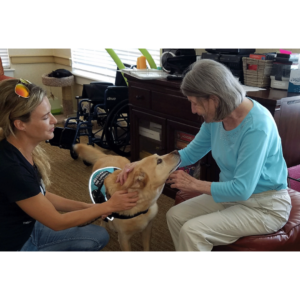Tips on Creating and Implementing a Memory Care Plan
Care plans are an essential element of senior care, and they play a particularly important role in memory care settings. Creating and managing memory care plans directly affects the quality of care that a memory care program can provide.
Why Individualized Care Plans Matter

Michala Gibson, Registered Nurse and co-founder of Connectivities
Michala Gibson, Registered Nurse and co-founder of Connectivities, explains that care plans are uniquely important in memory care. “Care plans are an essential part of providing care to anyone but become even more important when the person can’t make their needs known independently,” she says. “The care planning process should be a team effort with input from everyone involved, including the resident, family, nursing staff, therapy as well as ancillary staff, The team approach is so important because everyone holds important information and a different perspective – sometimes you will learn the most insightful gem from a housekeeper or dining staff!”
Best Practices for Creating an Individualized Care Plan
Gibson reveals that the key to a good care plan starts with looking at the person as a whole. “Go beyond just meeting basic needs to the things that make that person unique and special. The traditional care plan model is geared around interventions for a problem, but we need to move away from that to more of a proactive approach and focus on quality of life,” she says.
She notes that including hands-on activities in care plans has worked well for her residents. The activities selected are designed to spark meaningful and personal interactions between caregivers and residents. By including such activities, caregivers can connect with residents on a different level as they guide them through those simple activities.
Additionally, it’s important for a care plan to be both easy to understand and personal. “You should be able to figure out who the care plan is about without reading the name,” notes Gibson. “Look for ways to address social and emotional needs, not just the physical needs. Connecting with someone living with dementia can be challenging and require special skills/tools. Planning in meaningful, hands-on activities that work on maintaining or restoring lost skills can help.”
Implementing and Maintaining Care Plans
Creating the care plan is just the first step, but making sure the plan is followed is one of the hardest parts of the process, according to Gibson. She notes that consistent staff who know the resident and their preferences can help ensure that the care is delivered according to the resident care plan. When staff who don’t know the resident deliver care, there’s a greater chance that something will be missed, especially if the resident can’t make their needs known. “That’s when family involvement is key to ensure care is being delivered according to the care plan,” Gibson explains.
While there are set guidelines for the frequency at which a care plan should be reviewed, Gibson explains that it’s important to conduct a review when a significant change occurs that would alter the amount or type of care a person requires. “Often it is something like a fall with injury, weight loss, hospital stay or just a general decline that would trigger a significant change,” she says. Promptly reviewing the care plan can ensure that residents continue to receive appropriate and quality care.
“Senior living is changing at a rapid pace,” says Gibson. “Successful organizations will look at how we can raise the bar for all of our seniors and especially those that can’t speak for themselves by offering innovative solutions to problems and challenges. The future of senior living is moving toward more meaningful, fulfilling connections for everyone and away from silos and reactive approaches to care.”

Paige Cerulli is a contributing writer to i Advance Senior Care.
Related Articles
Topics: Activities , Featured Articles , Resident Care











